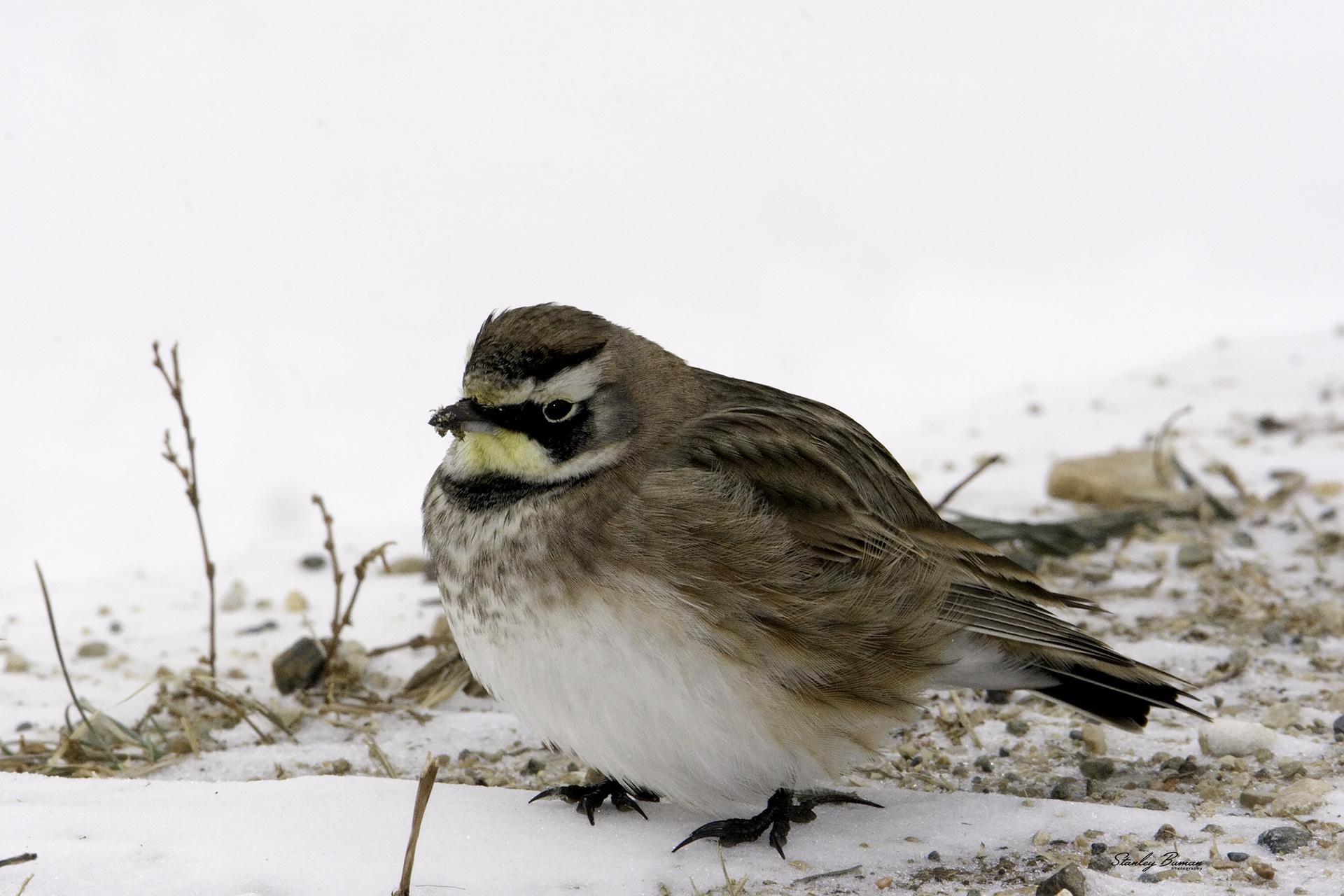Seeing birds along our highways is common after a heavy snow in the Midwest. The flocks are drawn to the freshly exposed grassy areas created by the snowplows. At a time when the farm fields are covered in a heavy blanket of white, the roadsides serve as a buffet of weed seeds and spilled grains. When the snow blows or melts off the fields, the birds seem to disappear, at least until the next significant snowfall.
So, what kind of birds are they anyway? Granted, there are many types of birds feeding along the highways. But the three most typical species of birds seen in flocks are Horned Larks, Lapland Longspurs, and Snow Buntings. The flocks can be composed of singles species or mixed species.
The most common of the three species is the Horned Lark. When on bare ground, they can blend in when their backs are turned toward you. But, when they turn their head, you are greeted with a nice yellow face, black mask, and occasionally you can see their tiny black horns protruding.

The Lapland Longspur is the second most common of these three species. They nest on the Tundra and over-winter across the Midwest.

Snow Buntings are true northern birds, nesting in the high Arctic and overwintering in Canada and the United States.

The next time we get a significant snowfall, take the time to check out these interesting birds. Of course, make sure you pull completely off the road and stay safe.


Thanks Stan,
You have always done well with bird shooting–Camera style.
I am going to put up my trail camera on a nesting Barred Owl.
We had it up last year and did get a few images of three young.
I Great horn Owl pair took over that cavity so am trusting that we got the right cavity for the Barred pair this year.
Don
Don, good luck with the trail camera on the Barred Owl. That could be quite interesting.
This is great! Usually, I’d just see a flock explode away from the ditch. I might be able to know which ones I’m looking at now. Thanks!
If you are on a county blacktop without much traffic, sometimes you can find a place to park as you are approaching a flock. Then you can get a better view. I have a hard time identifying them when I am zooming by a flock at 55 mph.
Thanks, Stan. Always refreshing to see your closeups of nature around us. We see deer, turkeys, eagles occasionally, many owls, hawks and turkey vultures from our window. During the winter up to 26 male cardinals came to our feeder at one time. Keep up the good work! M&D Von Weihe.
You have a great place for Cardinals in the winter. I need to find a good place to photograph Turkey toms strutting. Carroll county Iowa is not blessed with an abundance of wildlife habitat.